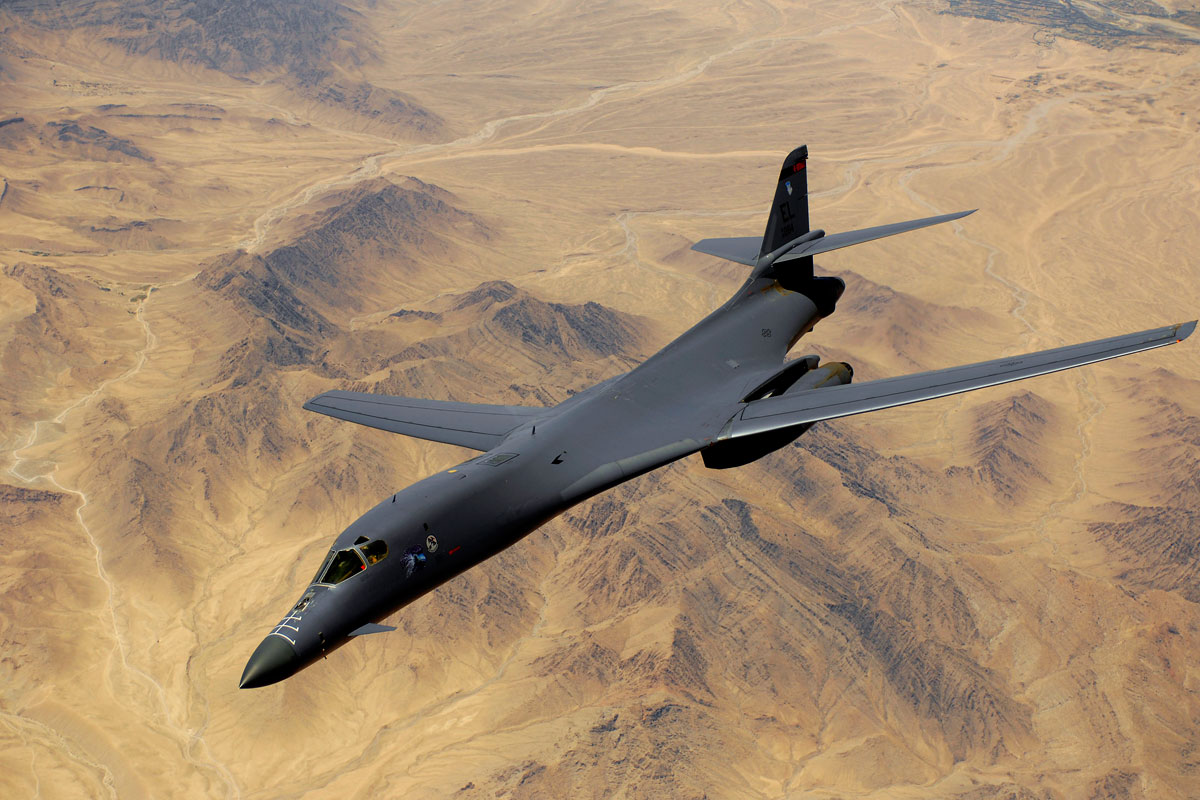A US Air Force bomber B-1B Lancer aircraft crashed at Ellsworth Air Force Base in South Dakota during a training mission. The four-member crew ejected after it lost control of the aircraft.
The USAF’s military aircraft have been involved in a slew of crashes. The last one was fatal for the eight crew members after their Osprey aircraft crashed off southern Japan and sank into the ocean during a training mission.
According to the base, the crash of the B1-B long-range strategic Bomber happened at around 5.50 pm local time on Thursday night. It is the USAF’s only supersonic bomber. While 100 B1s were originally built, fewer than 60 remain in service at Dyess Air Force Base in Texas and Ellsworth Air Force Base, the Associated Press reported.
The reason for the crash could not be ascertained immediately. But military enthusiasts have been pointing to the icy and foggy weather conditions that could be blamed. At the time of the crash, the area was facing below-freezing temperatures and cloudy weather.
The crash of Osprey’s aircraft in November 2023 was caused by a plane malfunction.
In August 2023, there were two separate fatal Marine Corps-related aviation accidents within a week — three US Marines died when their plane crashed while training in a joint-nation exercise in Australia just days after a soldier died while piloting a helicopter during training in California.
🚨#BREAKING: A B1 bomber has crashed outside of Ellsworth Air Force Base ⁰⁰📌#BoxElder | #SouthDakota
⁰Currently, there is a large emergency response underway after a B1 Bomber crashed outside the Ellsworth Air Force Base in Box Elder, South Dakota. Ellsworth Air Force Base… pic.twitter.com/2KQfc8zjUO— R A W S A L E R T S (@rawsalerts) January 5, 2024
The B-1B Lancer, known as “The Bone,” is a long-range, multi-mission, supersonic conventional bomber that has been in service with the US Air Force since 1985. Boeing’s website says the aircraft is expected to operate at its current demanding pace until at least 2040. The other reports suggest that the aircraft will be phased out by 2036. It can deliver massive amounts of precision and non-precision weapons across continents.
Boeing collaborates with the USAF to maintain the B-1 mission’s readiness. The B-1 was created with nuclear capabilities in mind, but in the middle of the 1990s, it was converted to a conventional-only combat mission.
Six B-1s flew 2 percent of strike missions during Operation Allied Force in 1999, yet they delivered 20 percent of the ordnance. Similarly, during Operation Enduring Freedom, the B-1 flew 2 percent of sorties but dropped more than 40 percent of the precision munitions. The B-1 has been used in combat since 2001 in Afghanistan.
The Bomber That Can Break The Sound Barrier
The B-1 adds to the USAF’s capabilities along with the other US bombers, such as the stealthy B-2 Spirit and the reliable B-52 Stratofortress. But the B-1 can break through the sound barrier, unlike the B-52 and B-2. Considering that the bomber can also carry a 25-ton payload, it is particularly amazing that the B-1 can reach a speed of Mach 1.2.
In 1969, the B1’s prototype edged out other contenders. Its development was going as per plan when Soviet pilot Viktor Belenko defected with the MiG-25 interceptor in 1976. Along with the jet, he brought military intelligence that suggested the USSR was developing a “Super-Foxbat.” It probably referred to MiG-31 with a sophisticated radar system that would make low-flying aircraft like B-1 an easy target.
A B-1B Lancer bomber caught fire in 2022 at Dyess Air Force Base, Texas. The bomber’s engine was last overhauled in 2017 and was supposed to handle more flying time before it was due for its next heavy maintenance.
The USAF currently owns around 40 B-1Bs. These bombers have been facing safety issues, ranging from fuel tank issues to ejection seat troubles. The Distinguished Flying Cross was awarded to a four-person Lancer crew in 2018 for the successful landing of their bomber despite a burning wing.

Because of the time it spends in the workshop, the fleet is infamous for having poor readiness rates. Less than 70 percent of the B-1s operated by the 7th Bomb Wing were unable to complete at least one core mission in the weeks preceding the crash in 2022, according to investigators.
In 2021, the Air Force grounded every B-1B aircraft to investigate fuel system issues. In recent years, the USAF has repeatedly suspended operations for all of its Lancers due to a variety of safety concerns.
Air Force Global Strike Command is in the process of retiring the Lancers over the next two decades and dumped 17 airframes in 2021. The Air Force retired about three dozen in the early 2000s and has lost several others in crashes.
The USAF is working towards becoming a two-bomber air force. The B-21 is under development and has undertaken its first flight. It is expected to enter the service in 2027. It has not announced when it will begin to retire another group of B-1Bs or draw down the B-2 Spirit fleet.
- Ritu Sharma has been a journalist for over a decade, writing on defense, foreign affairs, and nuclear technology.
- She can be reached at ritu.sharma (at) mail.com
- Follow EurAsian Times on Google News




